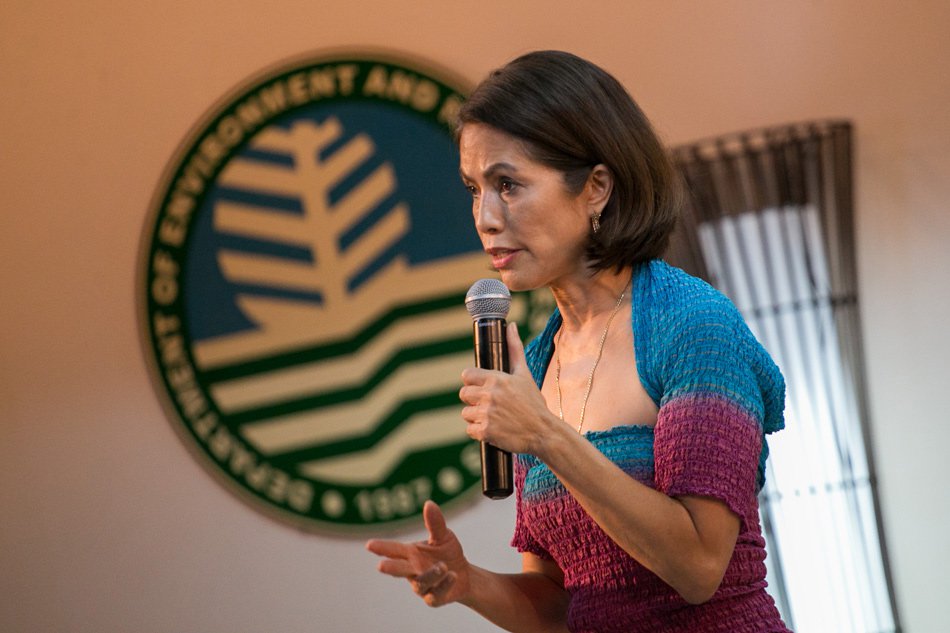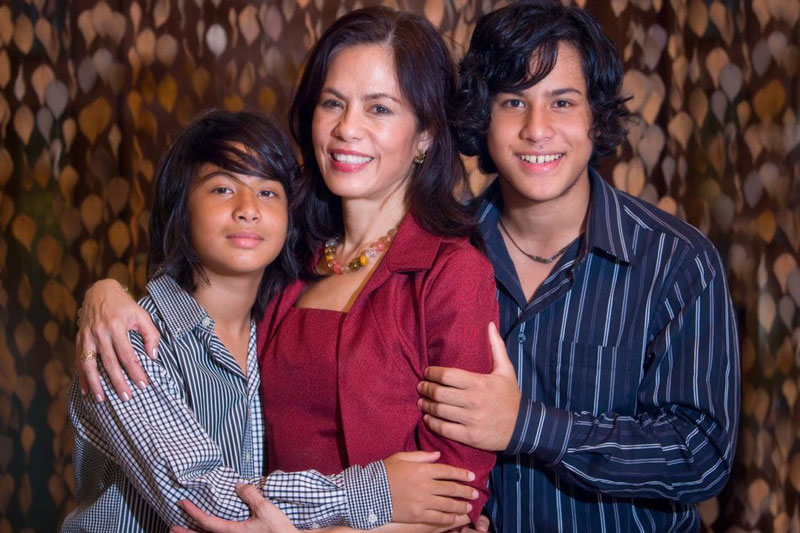Gina Lopez: Rich Girl, Kind Heart, Woman Warrior
/Gina Lopez, when she was Department of Environment and Natural Resources Secretary (Source: ABS-CBN)
Now, in her death, the accolades have not stopped coming, the public has been profuse in appreciation to Gina for showing us how wealth and privilege can and must be used to improve the lives of the most vulnerable sectors of the country, the majority who are poor, and protect the environment.
Regina Paz LaO’ Lopez was born on December 27, 1953, one of seven children of Eugenio (Geny) Lopez and Conchita LaO’. Her father’s family owned the Manila Electric Company, the ABS-CBN media empire, and the Manila Chronicle, among others. Her grandfather, Don Eugenio Lopez, was one of the prime movers and shakers of Philippine industry and politics.
When I interviewed her in February, Gina explained herself: “Being born in a position of privilege and social status brings with it a considerable amount of responsibility. It’s like my mission in life. I want to do something great, to do something for the country because I’m in a position to do it. I’m not interested in business, but I want to have money (for my causes).”
“Grateful thriving communities with eco-tourism projects in far-flung areas in the Cordillera, Palawan and Mindanao are some of Gina’s legacies in the country.”
Gina, who grew up in Forbes Park and went to Catholic schools, longed for something more than what was before her. She found it in meditation and good works, in Ananda Marga, a cult. In 1972, when super Typhoon Yoling devastated Central Luzon, Gina was home from school in the US when she joined Ananda Marga’s relief work, collecting truckloads of goods for the flood victims.
She was so into the work that when it was time to go back to school, she told her dad she didn’t want to. “He said it was okay for me to take a break. But I got so involved in the ashram to the point that it took over my whole life. I wanted to move to the ashram and that was traumatic for my parents.”
Gina said, “There is an intensity in me, that when I take on something, I take it on fully.” Forty-four years ago, she walked the streets of the business district in Makati begging for donations. She got hold of her parents’ telephone directory and began calling their friends, introducing herself as the daughter of the industrialist Geny Lopez and his wife Chita, asking for donations. “My parents were horrified.”
Looking back, Gina recalls, “I was so out of the norm. I gave away everything. When I look at it now, I think what happened is the experience of the divine took over me. At the end of the day, I left home and spent the next 20 years of my life in Ananda Marga. It was a bit crazy.”
She lived in an ashram in the crowded district of Paco in Manila where she observed, “The people looked different. It was like a movement into another world. And when I entered that other world, I was very naïve. I was very idealistic and longing for God.” Her family had her forcibly taken from the ashram and put her in DARE, a rehab facility for drug addicts, not for drugs, but to “re-program” her back to normal. But she escaped after a few months. “When nobody was looking, I climbed the wall,” and went back to the ashram.
Gina was sent as a missionary, first to Portugal, then to Africa where she worked for 15 years. “I lived in the slums of Africa so I know how to live with nothing. They sent me to Zambia with no money, nothing. I didn’t know anybody there. I had to figure out my own way. In that way, it was good because I learned how to survive.”
She went to the ships at the dock where she sought out the Filipino crewmen to ask for donations. “That’s where I learned to speak Tagalog,” she said.
Ironically, in her search for the spiritual, Gina says she learned to be materialistic. “I was given a duty. I had to set up an orphanage and a nursery and then I had to raise donations and send it to India. So, they don’t only not give you money, they ask money from you. And this makes you very materialistic. Because they keep asking you for money, you start valuing people with money because you need money from them. I didn’t grow up like that. I grew up in a non-material culture. My parents were all about principles and love.”
One rule of the organization was there should be no contact with her “worldly” family. But after 15 years in Africa, Gina broke the rule and called her parents who promptly came to visit. “It was so difficult for me because I grew up feeling family was everything and that was all forcibly taken away from me. I missed them to the point that I would go to the Philippine Embassy and cry.”
Gina also broke another rule. She got into a relationship with her superior, which was a direct violation of regulations. In 1991, Gina decided, out of principle, to just go back home.
Back in Manila, she found out that she was pregnant. Gina said that if she hadn’t been pregnant, she might have gone back to Africa. Life in Manila was so alien to her. “In Africa, I did everything on my own. I cooked, I cleaned, I drove. I was very busy living my own life. Then I came back here where I felt so out place. We had maids. I remember buying lipstick and it was so expensive. I had a really hard time adjusting.”
She had also lost her capacity to discern, “I could feel the laxity in my intellect. Because there you are not taught to think, to question. You learn by questioning, by reasoning, by seeing, but that muscle was dead for 20 years.”
Her partner followed her to Manila where they married and had two sons. When the marriage didn’t work, Gina said she took up Argentine tango, went back to school (Master’s in Management, Asian Institute of Management, 1993), and joined the ABS-CBN Foundation, initially as head of the disaster team, and later as Chair.
Gina Lopez and sons, Benjamin and Roberto (Source: ABS-CBN, photo by Philip Sison)
Woman Warrior
Running the Foundation where she was in touch with poverty, injustice and environmental degradation, Gina says, “The warrior me emerged.”
She got into the rehabilitation of the Pasig River, starting with the clean-up of esteros that feed into the river, which meant dealing with the poverty that drove informal settlers to build their shanties along waterways and polluting them. She rehabilitated the forest around La Mesa Dam, providing a much-needed lung for the metropolis.
There were other pressing issues such as disaster relief, early childhood development, education, child protection, and mining. “I don’t like suffering and I don’t like injustice. In Bantay Bata, I was horrified at what was happening to the children, but that was more the compassionate me. It was my exposure to mining that ramped it up many steps higher.”
She mounted a campaign, gathering over a million signatures against mining in Palawan. The mining community mocked her advocacy, mocking her “naiveté” in calling for an end especially to open pit mining. When she was appointed by President Duterte to head the Department of Environment and Natural Resources in 2016, the mining sector used its considerable muscle to get the Commission on Appointments to reject her appointment.
Gina Lopez, when she was ABS-CBN Lingkod Kapamilya Foundation, Inc. chairperson (Source: flowgalindez.com)
She left her office after only ten months, more determined than ever to fight for the environment, and literally singing what became her anthem, “I believe I can fly…”
And fly she did. Out of government, her advocacy flourished, focusing on environmentally-sustainable area development by helping marginalized communities become local economic zones, ensuring that their resources are used for the betterment of the community by removing the middleman, and injecting the values of love and caring as keys to economic growth. Grateful thriving communities with eco-tourism projects in far-flung areas in the Cordillera, Palawan and Mindanao are some of Gina’s legacies in the country.
Last February, Gina mulled over her amazing journey from being a missionary in Africa to building the economy through area development. Ananda Marga was not a mission, she said. “It was more like character formation, a cocooning. Now I feel I have a mission. In esoteric terms, it is bringing the word of light and love in this country, and doing this in service of the light.”
In life, Gina Lopez was an oddity. When she joined Ananda Marga, we saw her as lost little rich girl who was probably, at best, a dilletante, and forgot about her. But when she returned after 20 years and assumed the leadership of the ABS-CBN Foundation, she became more than a curiosity. Defying the stereotype of a spoiled rich socialite dipping her manicured fingers in social work, Gina touched and hugged the poor, sharing their sorrows and joys, and used her considerable clout to bring relief, joy and laughter, love and light – into their lives.
In death, Gina Lopez has become an icon, a hero who cared for the environment and its effects on the lives of the people and the entire planet – the rich girl who wanted, could -- and did something great for her country.
Gina Lopez succumbed to cancer on August 19, 2019. She was 65.
Paulynn Paredes Sicam is a retired journalist, freelance writer and editor based in Manila. She writes a column for the lifestyle section of the Philippine Star.





